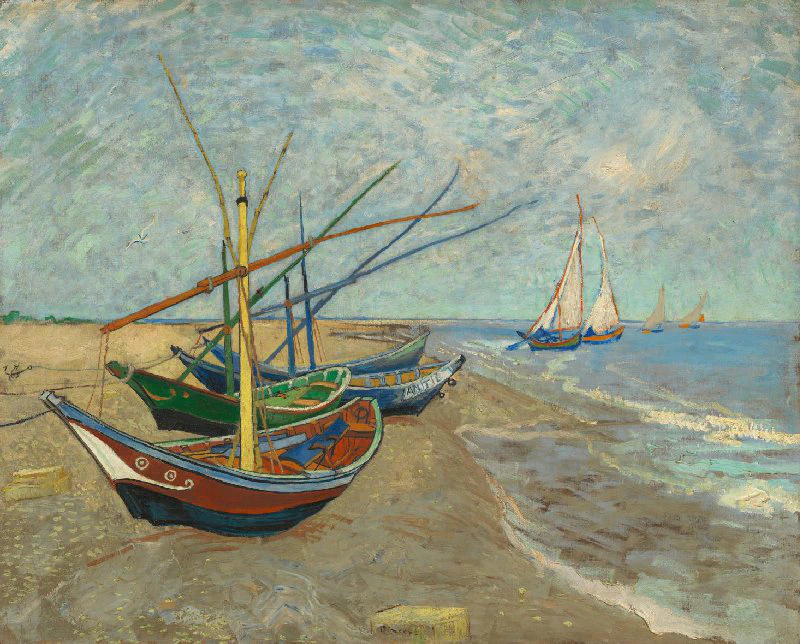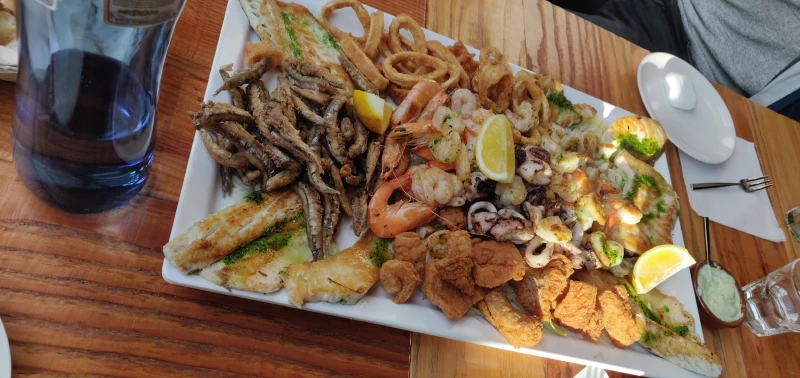Posted
on
in
Travel, Trip to Amsterdam
• 815 words
• 4 minute read
Tags:
Travel, Amsterdam, Netherlands, Van Gogh, Anne Frank
Today I went to visit the Van Gogh Museum in the morning, and the Anne Frank House late in the evening. In between, I walked around the city, and met up with my coworkers for dinner.
One of the reasons I chose the hotel that I did was that it was a very short walk over to the Van Gogh Museum. I had tickets for 10:00 at the museum with an audio tour. I recommend getting the audio tour as it gave some good background about Van Gogh and his life story.
Going into the museum, I did not know anything about Van Gogh’s life. I just knew of a few of his famous paintings. There was an exhibit about his life and how his work became popularized by his relatives.
My conclusion from the museum was that Vincent Van Gogh was insane, and kinda a looser, but a prolific artist. In the ten years between when he decided to begin his art career and when he committed suicide, he created hundreds of paintings. The reason that his work is so renown today is due to a brilliant marketing on the part of his brother Theo, a successful art gallery director, and his brother’s wife Jo, who continued popularizing Vincent’s work after his death and Theo’s death a year later.
Both Theo and Jo were savvy businesspeople and they increased the exposure of Vincent’s work by displaying it in the galleries that they operated and strategically selling specific pieces of his work at a measured pace. This created artificial scarcity for his works and greatly popularized them among the art devotees of the day.
I was especially struck by the painting Fishing Boats on the Beach at Les Saintes-Maries-de-la-Mer. I don’t know exactly why I like it; maybe it is the bright colours. What I know is that when I saw the painting, it caught my attention in a way that the other paintings did not.

Vincent van Gogh (1853 - 1890), Arles, June 1888
After going to the Van Gogh museum, I walked over to Vondelpark, a large park near the museum. There were nice walking trails and water features, and people were out exercising and relaxing. By this time it was getting to mid-afternoon and I was getting hungry. I walked over to a pizza restaurant and had a really nice pizza. By this time, it was late enough in the afternoon to check in to the hotel that I’ll be in for upcoming work retreat so I took the tram over and checked in and took a few minutes to relax.
Most of my coworkers had arrived or were arriving at about the same time as me. A group of us (Brad, Scott, Bradley, and myself) decided to go to dinner together. We walked to a sushi restaurant, but it was a take-out-only establishment, so we decided to try something else. We ended up at a fish restaurant where we got a fantastic platter full of fish of all kinds. The most unique fish was the fillets of swordfish. I enjoyed it very much.

We couldn’t really read the menu, so we just ordered the thing that looked like it said platter for four. We were not disappointed.
By the time dinner was over, it was about time for me to head over to the Anne Frank House for my time slot. I was fortunate to get a ticket at all (I booked only a couple weeks in advance), but the only time available was quite late in the evening.
It was a very impactful museum. The displays throughout the house thoughtfully conveyed the story of Anne Frank and her family. The rooms remain unfurnished as was the wish of Otto Frank, the only survivor of the people who hid in the annex.
I was saddened by the loss of innocence experienced by those who were forced into hiding. Yet I was encouraged by Anne’s determination to continue to pursue her dreams of becoming a journalist.
I was saddened by the total loss of freedom that the inhabitants of the annex endured. Yet I was encouraged by Anne’s ability to experience freedom through the written word.
I was saddened by the hopes of liberation that were shattered by their discovery and deportation to their deaths at various concentration camps. Yet I was encouraged by the account of great resilience and courage in the face of extreme persecution from the written words of a child.
In these confrontations with the ephemeral nature of life, I can’t help but take a step back and think about what really matters in life. Anne’s legacy is one of determination, resilience, courage, endurance, and fortitude. Anne’s life was cut short by the horrors of the Nazi rule, but her compelling story lives on.
